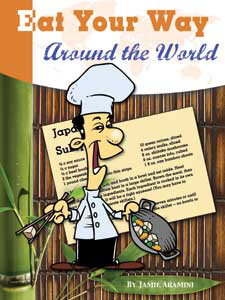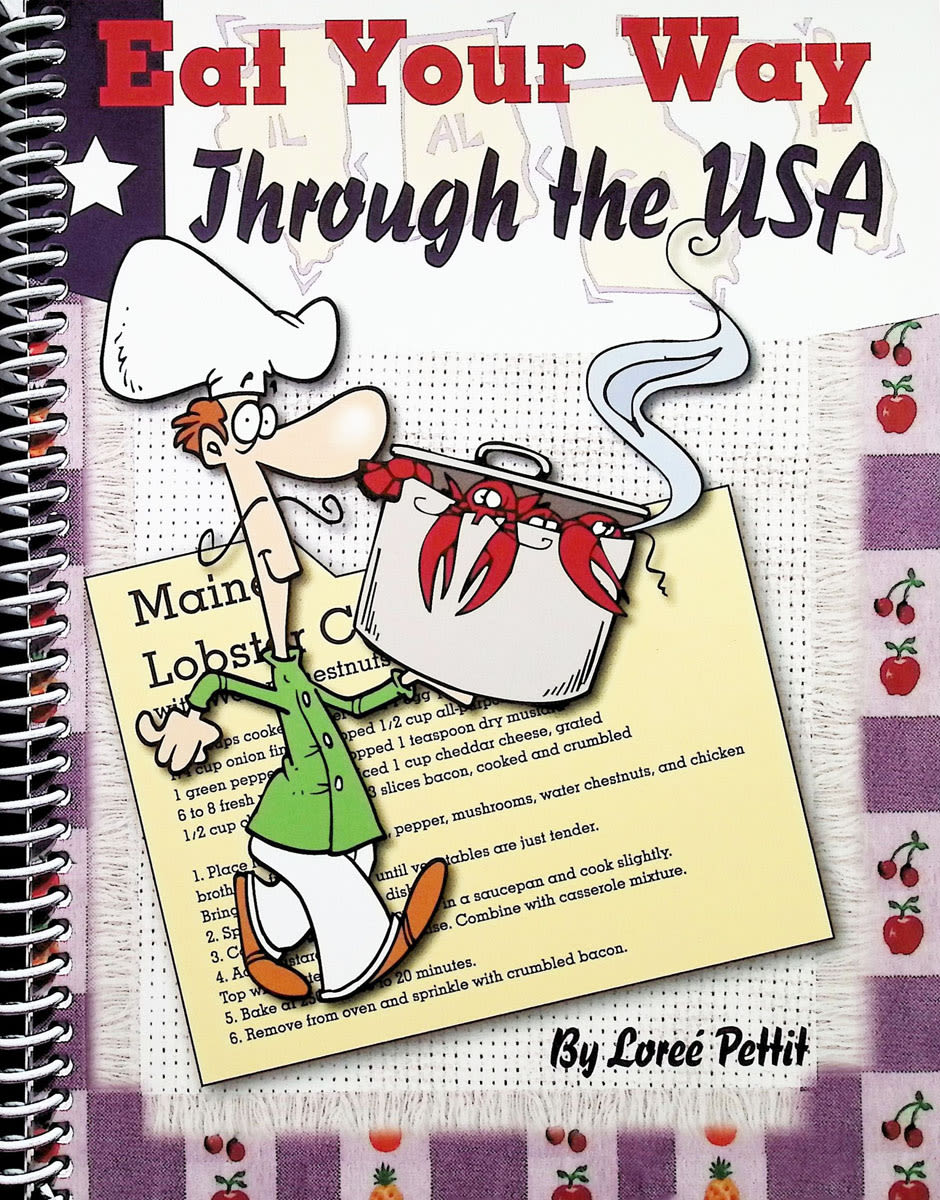Take a gastronomical tour of the world or of the United States with Eat Your Way Around the World by Jamie Aramini or Eat Your Way Through the USA by Loreé Pettit. A handful of recipes for each country or state are each accompanied by cultural or geographic information. For example, along with the recipes for Moroccan foods, we learn about the multicultural influence upon Morocco because of its geographic location as well as about diffas, Moroccan feasts.
I include reviews of these cookbooks because they are correlated directly with Geography Matters' geography unit studies Cantering the Country and Galloping the Globe, and they are also referenced in Trail Guide to World Geography and Trail Guide to U.S. Geography. In addition, they can be used alongside any geographically-oriented study to provide companion meal projects to buttress other information and activities.
Recipes are practical, using ingredients commonly available in the U.S. For example, recipes for Naan (Indian bread) and Murgh Kari (Chicken Curry) highlight two of the most common types of Indian food along with an interesting explanation about curry in general. The recipes are easy to follow, and ingredients should be easy to obtain. Dishes range from appetizers and drinks through main dishes, breads, and desserts.
I didn’t do a complete scientific analysis, but it seems to me that recipes in Eat Your Way Through the USA tend to be a little richer and more calorie-laden in comparison to those in Eat Your Way Around the World. A number of recipes in the USA book call for cream, half-and-half, and cheddar cheese along with packaged ingredients such as Pepperidge Farm stuffing, saltine crackers, and Bisquick. While there are recipes in the World cookbook that use cream and even refrigerated pizza dough, more of the recipes seem to use fresh ingredients. Perhaps that’s an accurate contrast of the typical American diet to the way the rest of the world eats!
The World cookbook has instructions at the beginning of the book for additional unit-study style activities using reproducible pages from the back of the cookbook. Students might keep a food journal using the form on one page or they might create a “Food Passport” using the passport booklet pages and stamp images on other pages.
However you use them, both cookbooks offer a way to make any geography-based unit study more interesting by adding cooking (and eating) activities.











